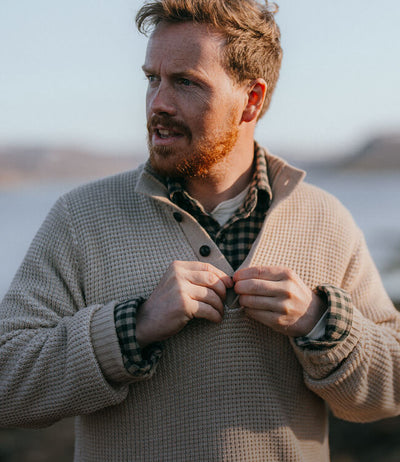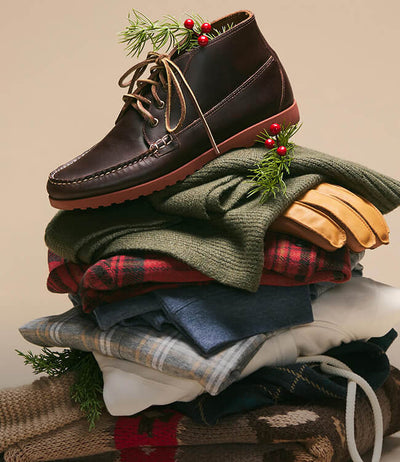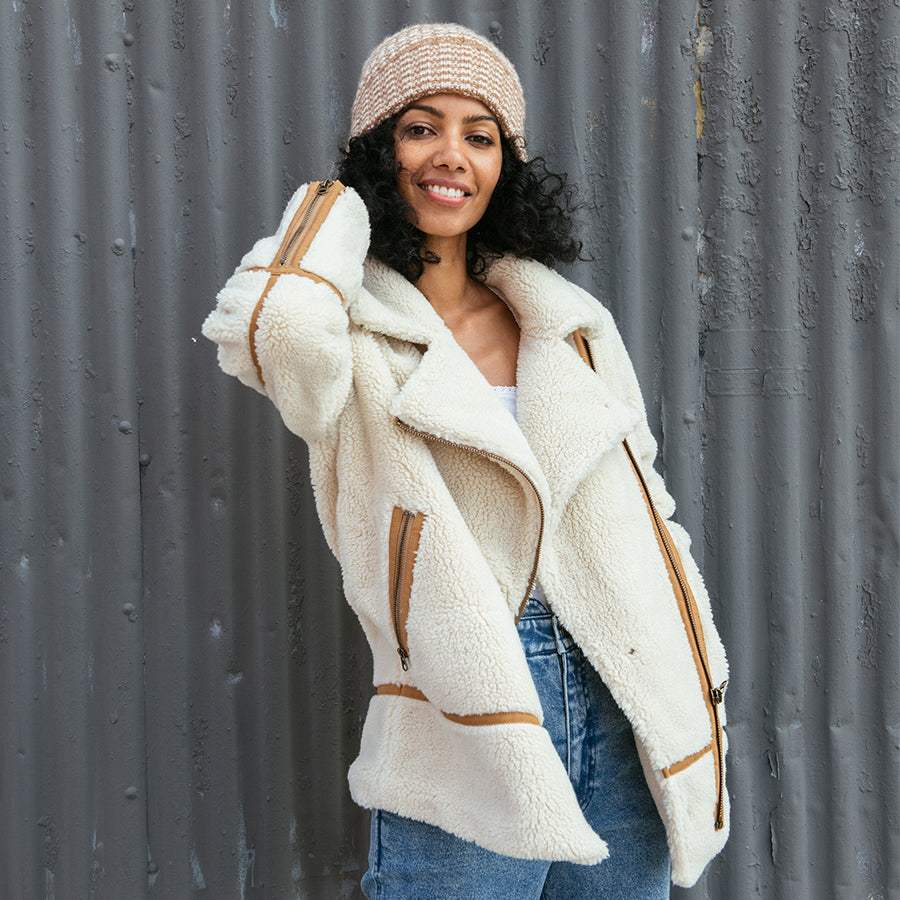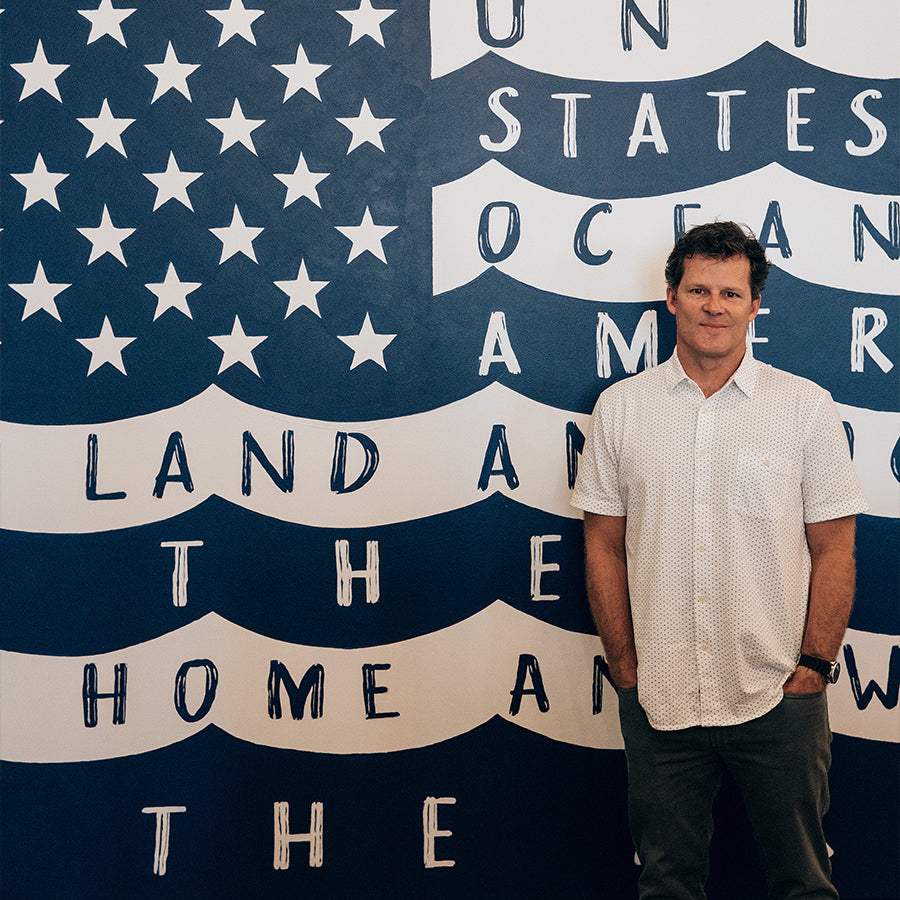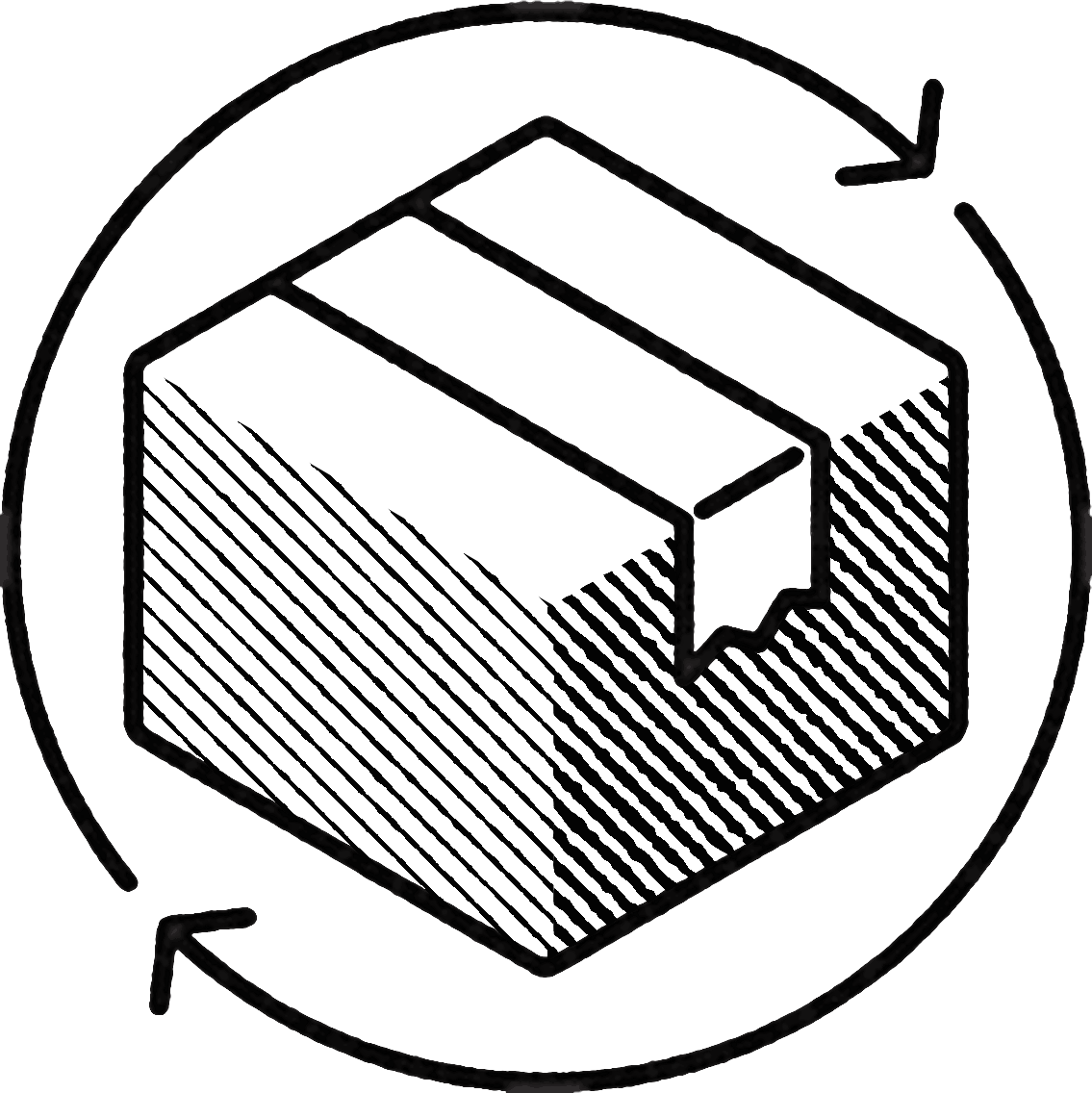Our clothing is not sustainable — in fact, in our opinion, it’s almost impossible to create anything sustainable at scale. Our clothing is designed thoughtfully and intentionally, using the highest quality materials possible. We do that in order to create incredibly comfortable pieces that will last a lifetime, thereby reducing our impact on the planet.
That being said, we’re always striving to make as much of what we do as environmentally friendly as possible, whether it’s swapping out packaging for more eco-friendly options, or switching up our production processes to reduce our reliance on harmful chemicals.
One big focus: using sustainable materials whenever possible. Currently, over half of our Men’s and Women’s collections are made from sustainable materials, and our goal for 2021 is 85% for both collections. Five of our favorites: traceable cashmere, recycled sherpa, organic cotton, bluesign® certified textiles, and merino.
TRACEABLE CASHMERE

Cashmere is harvested from goats that range the Himalayas, where cold temperatures encourage their thick coats — they naturally shed those coats in the spring, which is when herders gather the wool. It’s very difficult to produce: in a year, a single sheep might produce around 7 pounds of wool; a cashmere goat will only produce about half a pound.
It is, of course, incredibly soft and warm — it’s also long-lasting, biodegradable, and a renewable resource. We’re working on growing our collection of styles that utilize 100% traceable cashmere, for total farm-to-yarn transparency; our provider allows us to trace back to specific herds in Inner Mongolia.
Food for thought: Cashmere demand has skyrocketed, pushing overproduction, which can have disastrous ramifications for the herders, goats, and the lands they’re raised on. Our recommendation — high quality or recycled cashmere when you can, and keep it for life.
RECYCLED SHERPA

Fleece (we call it sherpa) was developed in the 80s by Malden Mills, an American textile maker, as a synthetic alternative to wool. Soft, warm, lightweight, quick-drying, and sweat-wicking, fleece became wildly popular.
It’s made from polyester — specifically polyethylene terephthalate (PET), or sometimes other synthetic fibers. Unfortunately, that makes it a non-renewable resource, which is why we turned to recycled sherpa made from PET bottles, reducing landfill mass, minimizing waste, and cutting back on air, water, and soil pollution. It also requires less energy to create than virgin fibers. Most of our recycled sherpa is also GRS certified for authenticity; we’re working on getting there for all of it.
Food for thought: Fleece is still fleece — it’s not biodegradable, and when you wash it, it will produce microplastics. After looking for recycled fleece, our best advice is to keep it as long as you can, wash it as little as possible, and to use a Guppy bag or other filtration device to capture microplastics when you do.
ORGANIC COTTON

Cotton may honestly be one of our favorite materials to work with. It’s incredibly versatile — depending on how you weave it or finish it, it can be used for everything from soft loungewear to water-resistant outerwear. It’s also natural, biodegradable, breathable, easy to care for, comfortable, soft, and pretty darn strong.
Because we love it so much, we’ve been working hard to make the shift to organically grown cotton as much as possible. It’s hypoallergenic, and produces 46% less CO2 than conventional cotton. It uses 91% less water to grow, and doesn’t rely on harmful chemicals that pollute the soil and water — it’s estimated that conventionally grown cotton uses 25% of the world’s insecticides and 10% of pesticides. While most of our organic cotton is certified, we’re still working to ensure it’s all certified by one verifying body.
Food for thought: One of the arguments against organic cotton is that it yields less per acre than conventional cotton does, implying that ultimately it may actually require more water to grow; and it’s still grown at scale, with all the environmental ramifications that entails. That being said, we think the pros here outweigh the cons.
BLUESIGN®

bluesign® is a third-party, independent verifier based in Switzerland. They trace a given textile or material’s path along the entire manufacturing process, with an eye towards holistic improvement.
Their goal is to encourage sustainability in the fashion industry; their focus is on raw materials. By tracking production from start to finish, they’re able to ensure that toxic chemicals are never introduced along the way — whether that’s weaving the fabric, dyeing it, or applying finishings.
Essentially, when a material is bluesign® certified, it means it’s safer for the environment, workers, and customers.
Food for thought: We’ve said it before and we’ll say it again: producing anything sustainably at scale is challenging, if not outright impossible. However, the fashion industry creates a huge environmental impact, and likely isn’t going anywhere anytime soon — which is why whenever and wherever those processes can improve is still a win.
MERINO

Like cashmere, merino is one of the world’s most luxurious natural fibers. It’s harvested from one of the world’s most ancient breeds of sheep, built to survive New Zealand’s dramatic and extreme climate.
The fibers of merino wool are fine and long, making it much softer and stronger than regular wool. Also like cashmere, it’s a natural, renewable, and biodegradable resource. It’s insanely versatile, perfect for everything from sweaters to base layers, and easily outclasses synthetic technical fabrics — it’s temperature regulating, breathable, sweat-wicking, and odor-resistant.
Food for thought: Also like cashmere, overproduction and exploitation are the things to watch for here — more demand means more sheep, lower prices, worse conditions for the animals and herders, and more land consumed with raising them. Again, our recommendation here is high quality or recycled fabrics, well-taken care of, that will last a lifetime.
At the end of the day, of course, we can always do better. We are always learning, always improving, and will always do our best to share that journey with you. If you ever have any ideas or questions, feel free to DM us @FahertyBrand on Instagram or shoot us a note at hello@fahertybrand.com.
